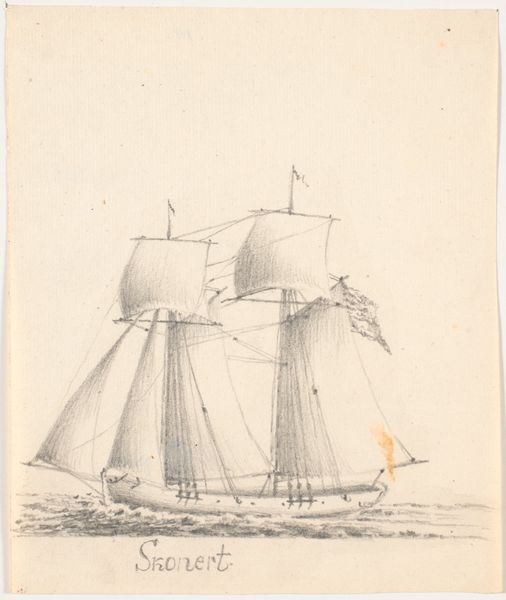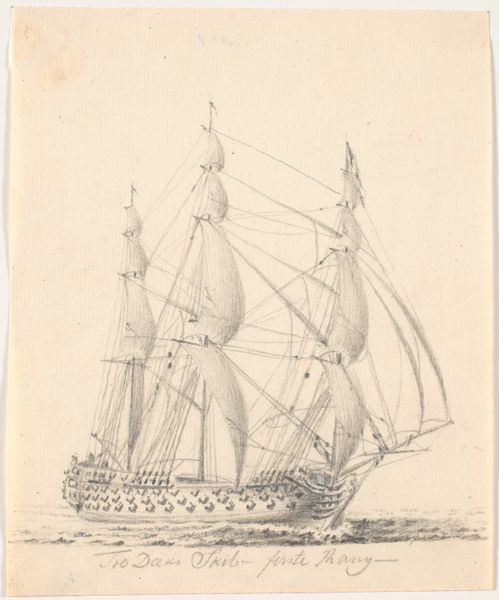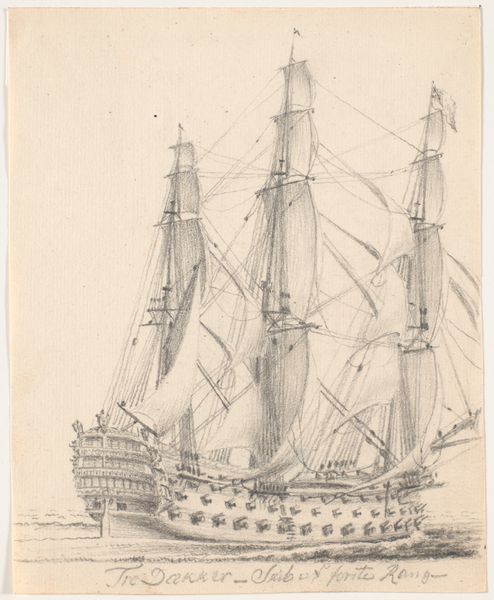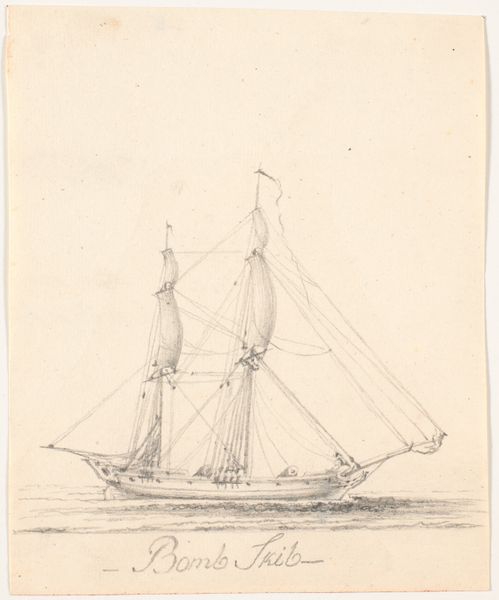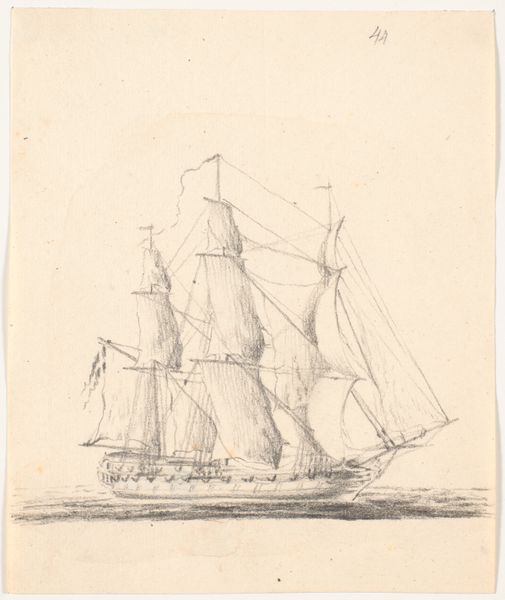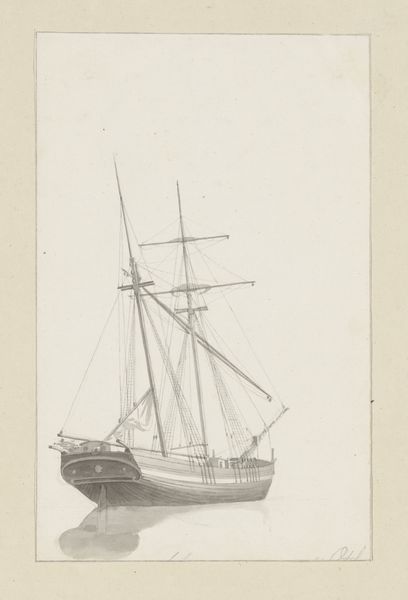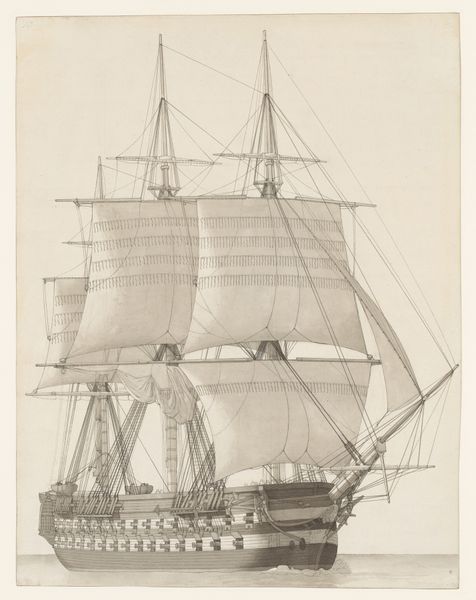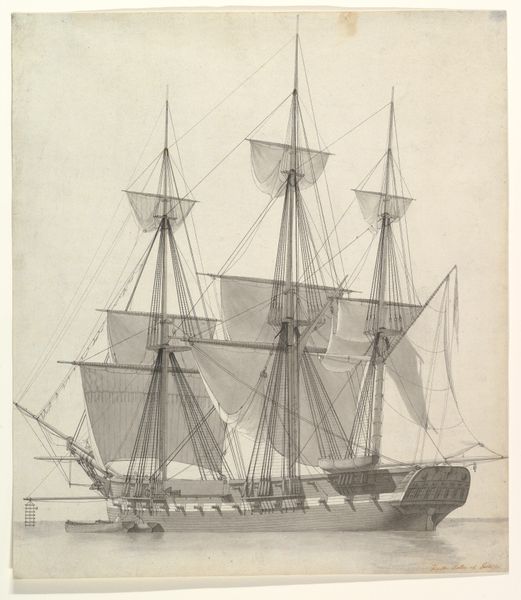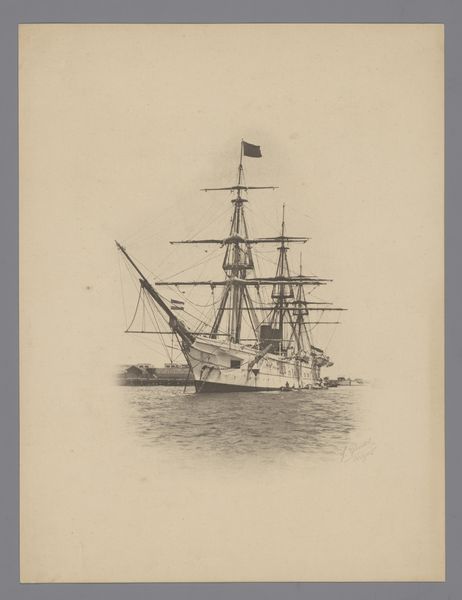
drawing, pencil
#
drawing
#
pencil sketch
#
landscape
#
pencil
#
realism
Dimensions: 136 mm (height) x 106 mm (width) (bladmaal)
Editor: So, this is "Marineskib med strøgne sejl," or Naval Ship with Furled Sails, a pencil drawing by C.A. Lorentzen, sometime between 1746 and 1828. It’s just a sketch, but I’m struck by the detail, considering it's primarily pencil on paper. What draws your eye? Curator: Immediately, I'm drawn to the paper itself. What kind of paper was being produced at this time, and how would that impact the artistic process? Consider the materiality: pencil lead against the fibres, the potential for smudging, the very *physicality* of making this image. What social factors contributed to the availability and cost of these materials? Editor: That's interesting, I hadn’t considered that. I was more focused on the ship. Curator: But the ship doesn't exist in a vacuum! Think about the labor involved. Who built that ship? What were their working conditions? How did the act of shipbuilding, a crucial part of naval power, shape society at the time? And how does a drawing like this engage with that reality? Editor: I guess it presents a romanticized view, overlooking the harsh realities of maritime life and labor? Curator: Precisely! And by focusing on the *making* of the artwork itself, on the economic and social context of its creation, we start to peel back those layers of romanticism. Consider the consumption of art and its social stratification... how does that inform our perception? Editor: So, it's not just about the image, but about the whole system that allows the image to exist? Curator: Exactly. Art doesn't materialize out of thin air. It's a product of material conditions, of labor, and of consumption. Exploring these conditions, gives it more context. Editor: I see. So by considering all those things we can get a far broader understanding. Thanks, that was very illuminating. Curator: Indeed. I have also learnt how this methodology applies to the narrative.
Comments
No comments
Be the first to comment and join the conversation on the ultimate creative platform.
